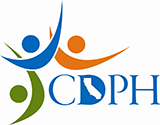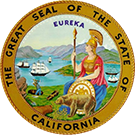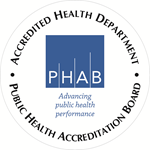O

State Public Health Officer & Director

Governor
State of California—Health and Human Services Agency
California Department of Public Health
Updates as of December 13, 2021:
- Adds requirement for universal masking indoors statewide December 15, 2021, through January 15, 2022.
Guidance For the Use of Masks
Background
The COVID-19 vaccines remain effective in preventing serious disease, hospitalization, and death from the SARS-CoV-2 virus. Unvaccinated persons are more likely to get infected and spread the virus which is transmitted through the air and concentrates indoors. To ensure that we collectively protect the health and well-being of all Californians; keep schools open for in-person instruction; and allow California's economy to remain open and thrive, the California Department of Public Health (CDPH) is requiring masks to be worn in all indoor public settings, irrespective of vaccine status, for the next four weeks (December 15, 2021 through January 15, 2022).
This new measure brings an added layer of mitigation as the Omicron variant, a Variant of Concern as labeled by the World Health Organization, is detected across California, the United States, and the world and is likely to spread more easily than the original SARS-CoV-2 virus and the Delta variant. Additionally, this new measure brings additional protection to individuals, families and communities during the holidays when more travel occurs, and time is spent indoors.
Since Thanksgiving, the statewide seven-day average case rate has increased by 47% and hospitalizations have increased by 14%. While the percentage of Californians fully vaccinated and boosted continues to increase, we continue to have areas of the state where vaccine coverage is low, putting individuals and communities at greater risk for COVID-19. Given the current hospital census, which is at or over capacity, even a moderate surge in cases and hospitalizations could materially impact California's health care delivery system within certain regions of the state. Other states and countries with similar vaccination rates that have relaxed masking requirements are seeing surges in COVID-19 cases and increasing stress in their healthcare systems.
As recently noted in an updated Science Brief[1] by the Centers for Disease Control and Prevention (CDC), at least ten studies have confirmed the benefit of universal masking in community level analyses: in a unified hospital system,[2] a German city,[3] two U.S. states,[4], [5] a panel of 15 U.S. states and Washington, D.C.,[6], [7] as well as both Canada[8] and the U.S.[9], [10], [11] nationally. Each analysis demonstrated that, following directives for universal masking, new infections fell significantly. Two of these studies[12], [13] and an additional analysis of data from 200 countries that included the U.S.[14] also demonstrated reductions in mortality. Another 10-site study showed reductions in hospitalization growth rates following mask mandate implementation.[15]
Implementing a universal masking requirement not only has proven to decrease the rate of infections but is able to slow community transmission. A series of cross-sectional surveys in the U.S. suggested that a 10% increase in self-reported mask wearing tripled the likelihood of slowing community transmission.[16]
The masking requirement in California schools has allowed us to keep schools open when compared to other parts of the country. California accounts for roughly 12% of all U.S. students, but only 1% of COVID-19 related school closures. Nationally during the Delta surge in July and August 2021, jurisdictions without mask requirements in schools experienced larger increases in pediatric case rates, and school outbreaks were 3.5 times more likely in areas without school mask requirements.[17], [18]
In workplaces, employers are subject to the Cal/OSHA COVID-19 Emergency Temporary Standards (ETS) or in some workplaces the Cal/OSHA Aerosol Transmissible Diseases (ATD) Standard and should consult those regulations for additional applicable requirements.
Masking Requirements
Masks are required for all individuals in all indoor public settings, regardless of vaccination status from December 15, 2021 through January 15, 2022 (surgical masks or higher-level respirators are recommended).
See State Health Officer Order, issued on July 26, 2021, for a full list of high-risk congregate and other healthcare settings where surgical masks are required for unvaccinated workers, and recommendations for respirator use for unvaccinated workers in healthcare and long-term care facilities in situations or settings not covered by Cal OSHA ETS or ATD.
For additional information on types of masks, the most effective masks, and ensuring a well-fitted mask, individuals should refer to CDPH Get the Most out of Masking and see CDPH Masking Guidance Frequently Asked Questions for more information.
No person can be prevented from wearing a mask as a condition of participation in an activity or entry into a business.
Exemptions to masks requirements
The following individuals are exempt from wearing masks at all times:
- Persons younger than two years old. Very young children must not wear a mask because of the risk of suffocation.
- Persons with a medical condition, mental health condition, or disability that prevents wearing a mask. This includes persons with a medical condition for whom wearing a mask could obstruct breathing or who are unconscious, incapacitated, or otherwise unable to remove a mask without assistance.
- Persons who are hearing impaired, or communicating with a person who is hearing impaired, where the ability to see the mouth is essential for communication.
- Persons for whom wearing a mask would create a risk to the person related to their work, as determined by local, state, or federal regulators or workplace safety guidelines.
[1] Science Brief: Community Use of Masks to Control the Spread of SARS-CoV-2 | CDC
[2] Wang X, Ferro EG, Zhou G, Hashimoto D, Bhatt DL. Association between universal masking in a health care system and SARS-CoV-2 positivity among health care workers. JAMA. 2020;324(7):703–704.
[3] Mitze T, Kosfeld R, Rode J, Wälde K. Face masks considerably reduce COVID-19 cases in Germany. Proc Natl Acad Sci U S A. 2020;117(51):32293–32301.
[4] Gallaway MS, Rigler J, Robinson S, et al. Trends in COVID-19 incidence after implementation of mitigation measures – Arizona, January 22-August 7, 2020. MMWR Morb Mortal Wkly Rep. 2020;69(40):1460–1463.
[5] Van Dyke ME, Rogers TM, Pevzner E, et al. Trends in county-level COVID-19 incidence in counties with and without a mask mandate – Kansas, June 1-August 23, 2020. MMWR Morb Mortal Wkly Rep. 2020;69(47):1777–1781.
[6] Lyu W, Wehby GL. Community use of face masks and COVID-19: evidence from a natural experiment of state mandates in the US. Health Aff (Millwood). 2020;39(8):1419–1425.
[7] Hatzius J, Struyven D, Rosenberg I. Face masks and GDP. Updated June 29, 2020. Accessed July 8, 2020.
[8] Karaivanov A, Lu SE, Shigeoka H, Chen C, Pamplona S. Face masks, public policies and slowing the spread of COVID-19: evidence from Canada. J Health Econ. 2021;78:102475.
[9] Joo H, Miller GF, Sunshine G, et al. Decline in COVID-19 hospitalization growth rates associated with statewide mask mandates – 10 states, March-October 2020. MMWR Morb Mortal Wkly Rep. 2021;70(6):212–216.
[10] Chernozhukov V, Kasahara H, Schrimpf P. Causal impact of masks, policies, behavior on early COVID-19 pandemic in the U.S. J Econom. 2021;220(1):23–62.
[11] Guy GP Jr, Lee FC, Sunshine G, et al. Association of state-issued mask mandates and allowing on-premises restaurant dining with county-level COVID-19 case and death growth rates – United States, March 1-December 31, 2020. MMWR Morb Mortal Wkly Rep. 2021;70(10):350–354.
[12] Ibid, 6.
[13] Ibid, 7.
[14] Ibid, 11.
[15] Ibid, 9.
[16] Rader B, White LF, Burns MR, et al. Mask-wearing and control of SARS-CoV-2 transmission in the USA: a cross-sectional study. The Lancet Digital Health. 2021;3(3):e148–e157.
[17] Jehn M, McCullough JM, Dale AP, Gue M, Eller B, Cullen T, Scott SE. Association between K–12 school mask policies and school-associated COVID-19 outbreaks — Maricopa and Pima Counties, Arizona, July–August 2021. MMWR Morb Mortal Wkly Rep. 2021; 70(39);1372–1373.
[18] Budzyn SE, Panaggio MJ, Parks SE, Papazian M, Magid J, Eng M, Barrios LC. Pediatric COVID-19 cases in counties with and without school mask requirements — United States, July 1–September 4, 2021. MMWR Morb Mortal Wkly Rep. 2021; 70(39);1377–1378.

PO Box, 997377, MS 0500, Sacramento, CA 95899-7377
Department Website (cdph.ca.gov)

